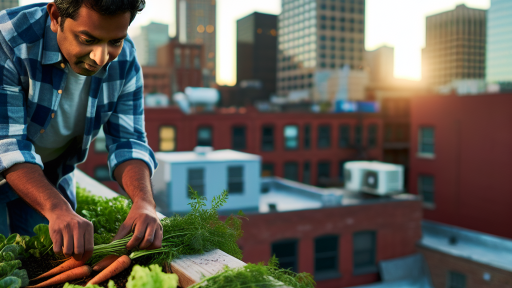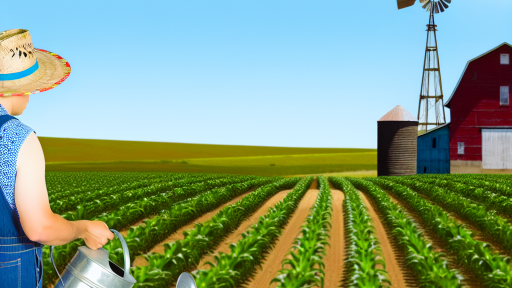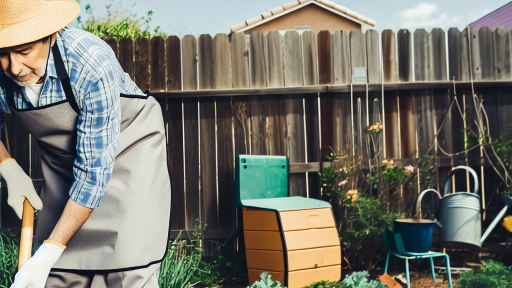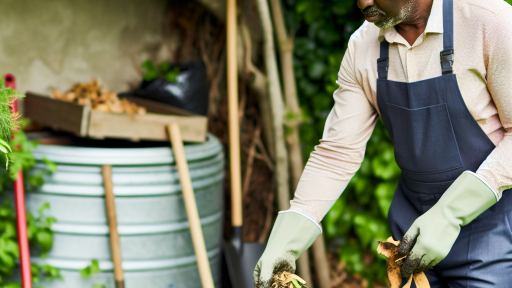Understanding Mushroom Growth Cycles: When to Harvest
Life Cycle of Mushrooms
Mushrooms undergo distinct phases during their growth cycle.
These phases include mycelium growth, pinning, and fruiting.
Each stage brings different indicators of readiness for harvest.
Optimal Harvest Timing
Timing is crucial when harvesting mushrooms.
Harvesting too early can affect flavor and texture.
Conversely, waiting too long can lead to over-ripeness.
Monitoring your mushrooms consistently will help.
Visual Indicators
Look for visible changes in color and size.
Young mushrooms will appear firm and compact.
When caps begin to open, they are nearing maturity.
Environmental Factors
Temperature and humidity significantly impact growth.
Optimal conditions promote quick and robust growth.
Changes in these factors can signal it’s time to check for readiness.
Best Practices for Harvesting
Use a sharp knife or scissors for clean cuts.
Cut mushrooms at the base to maintain mycelium health.
Transform Your Agribusiness
Unlock your farm's potential with expert advice tailored to your needs. Get actionable steps that drive real results.
Get StartedAvoid twisting or pulling to prevent damage.
Post-Harvest Care
Immediately store harvested mushrooms in a cool place.
Air circulation is essential to prevent spoilage.
Keep them dry to preserve freshness and flavor.
Identifying the Right Tools for Harvesting Mushrooms
Essential Harvesting Tools
Gathering mushrooms requires specific tools for effective harvesting.
A sharp knife is essential for cutting mushrooms cleanly.
Always carry a basket to collect the harvested mushrooms.
Use a brush to gently clean any dirt from the mushrooms.
A pair of gloves can protect your hands during harvesting.
Understanding Knife Selection
Select a knife with a sharp, curved blade for best results.
This design allows for precision while cutting at the base.
Look for a knife with a comfortable grip to prevent slipping.
Consider a foldable design for easy storage and transport.
Baskets and Containers
Choose a basket that allows for air circulation to prevent spoilage.
Woven baskets are a popular choice among mushroom harvesters.
Make sure the basket is large enough for your expected yield.
Consider using containers that keep mushrooms upright to avoid bruising.
Cleaning Tools
A soft-bristled brush works well for removing dirt from mushrooms.
A damp cloth can help clean delicate varieties without damage.
Keep a small container of water handy for rinsing if needed.
Ensure that you dry mushrooms after washing to prevent moisture buildup.
Additional Protective Gear
Wear gloves to shield your hands from irritants or contaminants.
Consider long sleeves if you are in a location with thorny underbrush.
Sturdy footwear is essential for traversing uneven terrain.
Showcase Your Farming Business
Publish your professional farming services profile on our blog for a one-time fee of $200 and reach a dedicated audience of farmers and agribusiness owners.
Publish Your ProfileBringing along a wide-brimmed hat can provide sun protection.
Best Practices for Harvesting Techniques to Minimize Damage
Understanding the Right Timing
Harvesting farm-grown mushrooms requires precise timing.
Inspect the mushrooms daily as they approach maturity.
Choose to pick them just before the caps fully open.
This practice enhances both flavor and shelf life.
Utilizing Proper Tools
Employ the right tools to minimize damage during harvesting.
A sharp knife or scissors works best for cutting stems.
Using your hands may bruise the delicate mushrooms.
Alternatively, invest in a specialized mushroom knife.
Employing Gentle Handling Techniques
Gentle handling is critical to maintaining mushroom quality.
Avoid squeezing or pressing on the mushrooms while handling.
Instead, hold them gently to prevent bruising.
Use a soft container to carry harvested mushrooms.
Cleaning and Storing after Harvest
Clean harvested mushrooms carefully to remove debris.
Use a soft brush or cloth for this task.
Do not rinse them with water, as mushrooms absorb moisture.
Store them in a breathable container, such as a paper bag.
Documenting Harvesting Practices
Maintaining a record of harvesting protocols aids improvement.
Note which methods proved successful and which did not.
This documentation helps refine your techniques over time.
Share your findings with fellow growers for collective learning.
Uncover the Details: Seed Starting Tips For Urban Farmers
Post-Harvest Handling: Storing and Cleaning Mushrooms
Importance of Proper Handling
Proper handling enhances the quality of harvested mushrooms.
High-quality mushrooms fetch better prices in the market.
Additionally, careful handling minimizes spoilage during storage.
Storing Fresh Mushrooms
Begin storage immediately after harvest.
Place mushrooms in ventilated containers for optimal air circulation.
Avoid airtight containers to prevent moisture buildup, which may cause mold.
Store your mushrooms in a cool place, ideally around 34-38°F.
Check humidity levels, aiming for around 90% for best results.
Cleaning Techniques
Clean mushrooms just before use to maintain freshness.
Use a soft brush to remove dirt without damaging the delicate caps.
If necessary, wipe them with a damp cloth; avoid soaking in water.
For heavily soiled mushrooms, a quick rinse is permissible, but dry them promptly.
Handling Spoiled Mushrooms
Inspect mushrooms carefully for signs of spoilage before storage.
Remove any damaged or discolored mushrooms immediately.
Storing spoiled mushrooms can lead to deterioration of healthy ones.
Whenever possible, compost spoiled mushrooms to reduce waste.
Uncover the Details: Harvesting Best Practices in Organic Gardening
Optimal Timing
Harvesting in Relation to Humidity
Humidity plays a critical role in mushroom harvesting.
Showcase Your Farming Business
Publish your professional farming services profile on our blog for a one-time fee of $200 and reach a dedicated audience of farmers and agribusiness owners.
Publish Your ProfileHarvest mushrooms when humidity is high for the best flavor.
Examine the growing environment frequently to monitor conditions.
For instance, a humidity level above 70% is ideal.
In contrast, lower humidity can lead to dry mushrooms.
Thus, adjust watering techniques to maintain optimal humidity.
Additionally, be aware of the specific needs for each mushroom type.
For example, shiitake mushrooms prefer slightly different conditions than oyster mushrooms.
Impact of Temperature
Temperature also influences the harvesting process significantly.
Most mushrooms thrive in temperatures ranging from 60 to 75 degrees Fahrenheit.
Harvesting should occur during the coolest part of the day.
This practice helps preserve the delicate structures of the mushrooms.
Avoid harvesting during extreme heat, as this leads to rapid deterioration.
Moreover, sudden temperature shifts can shock mushrooms and alter their taste.
Timing Considerations
Understanding the timing of harvest is vital for quality.
Observe the growth cycle to identify the best moment for picking.
Mushrooms are typically ready for harvest when the caps are fully opened.
Inspect each mushroom individually to assess readiness carefully.
Additionally, keep a schedule based on previous harvests for consistency.
Best Practices for Harvesting
When harvesting, use a sharp knife or scissors for efficiency.
Cut the mushrooms at the base to avoid damage to the mycelium.
Handle mushrooms gently to prevent bruising during collection.
After harvesting, clean the mushrooms softly with a brush or dry cloth.
Lastly, store harvested mushrooms in a cool, dark place for longevity.
Gain More Insights: Container Gardening Setup Tips For Small Farms
Signs of Maturity: How to Know When Mushrooms are Ready
Recognizing the Right Time
Understanding mushroom maturity is essential for the best harvest.
Observe your mushrooms closely to determine their readiness.
A mature mushroom exhibits specific visual characteristics.
Pay attention to the color and size of the caps.
Freshly grown mushrooms usually show a rich, vibrant color.
Additionally, the caps should be full and well-shaped.
Cap Characteristics
The cap is a crucial indicator of mushroom maturity.
When fully mature, the cap expands and flattens out.
Look for any visible gills beneath the cap.
Gills should be exposed and free from any tears.
Moreover, mature caps may show slight discoloration.
This indicates they are ready to be harvested.
Stem and Gills Inspection
The stem also provides important maturity cues.
A firm and thick stem signifies a healthy mushroom.
Conversely, a thin or brittle stem suggests immaturity.
Examine the gills closely for color changes.
Showcase Your Farming Business
Publish your professional farming services profile on our blog for a one-time fee of $200 and reach a dedicated audience of farmers and agribusiness owners.
Publish Your ProfileGills turning dark is a sign of increased maturity.
Thus, the timing of your harvest is crucial for flavor.
Environmental Conditions
Environmental factors can influence mushroom growth rates.
Humidity, temperature, and light are critical conditions.
High humidity levels typically speed up maturation.
On the other hand, cooler temperatures can slow it down.
Understand the optimal conditions for each mushroom variety.
This knowledge will aid in predicting harvest times.
Discover More: Companion Planting Strategies For Container Gardens
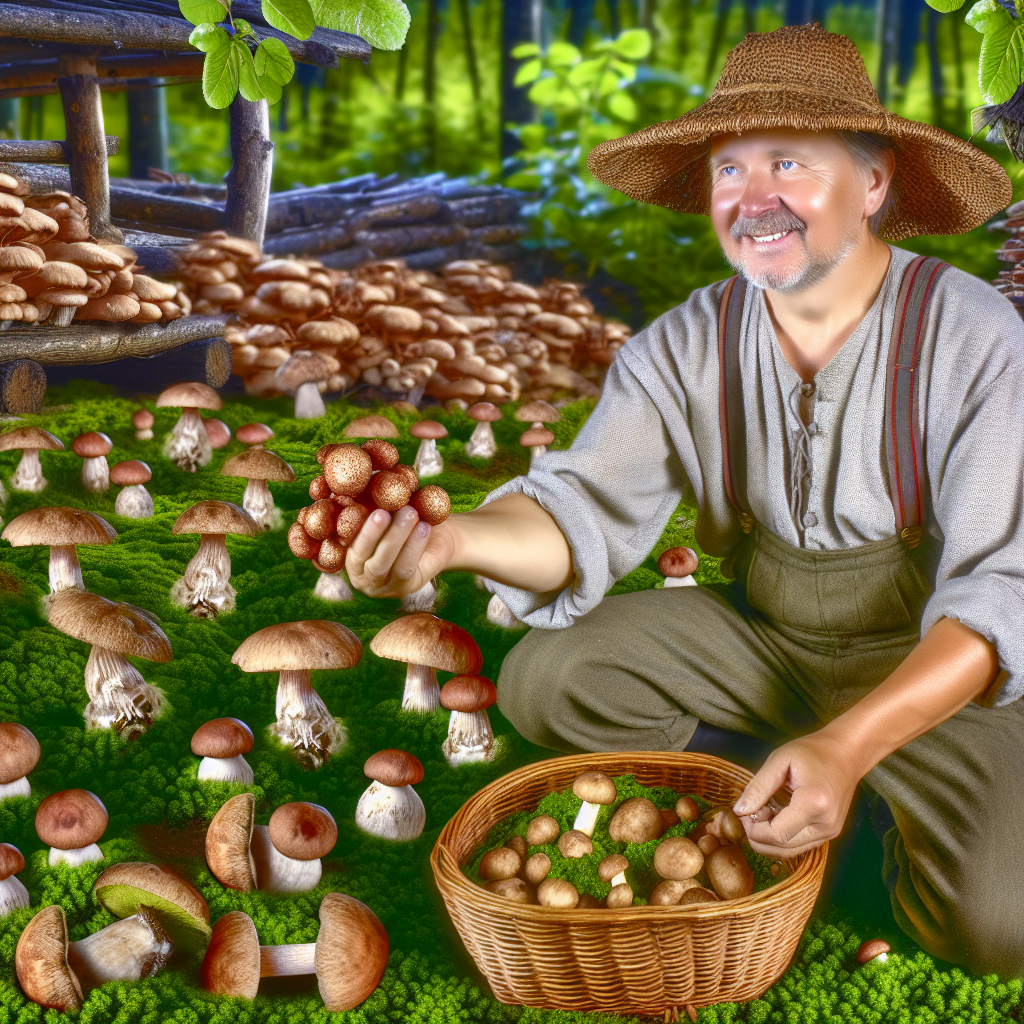
Safety Precautions: Avoiding Contamination During Harvesting
Cleanliness is Crucial
Maintain a clean working environment throughout the harvesting process.
Sanitize tools and equipment before starting to harvest.
This helps prevent unwanted pathogens from contaminating the crop.
Personal Hygiene Practices
Wash hands thoroughly with soap before handling mushrooms.
Wear clean gloves to minimize direct contact with the produce.
Regularly change gloves if they become contaminated.
Proper Harvesting Techniques
Use sharp, sterile knives or scissors for cutting mushrooms.
Avoid tearing or pulling mushrooms from their substrate.
This minimizes damage and helps reduce infection risk.
Monitor Environmental Conditions
Keep an eye on humidity and temperature levels during harvesting.
Excess moisture can lead to bacterial growth and spoilage.
Ensure proper ventilation in the harvesting area as well.
Storage Safety Measures
Store harvested mushrooms in clean, ventilated containers.
Avoid overcrowding to maintain air circulation.
Refrigerate mushrooms promptly after cleaning and packing.
Handling Contaminated Spores
Be aware of any visible signs of contamination during harvest.
Immediately discard any contaminated or spoiled mushrooms.
This prevents the spread of spores and protects healthy crops.
Education and Training
Train all harvesting staff on safety protocols and hygiene practices.
Provide regular updates and refresher courses on contamination risks.
Encourage a culture of safety and accountability among team members.
Sustainable Harvesting
Importance of Sustainable Practices
Sustainable harvesting practices ensure the continued growth of mushrooms.
This approach helps maintain healthy ecosystems for future crops.
Additionally, it contributes to the overall health of the farming community.
Timing Your Harvest
Harvesting at the right moment maximizes quality and yield.
Observe the growth stages of mushrooms carefully.
Each species has its specific peak time for harvesting.
Generally, mushrooms are best picked before spore release.
Techniques for Harvesting
Using the right techniques minimizes damage to the remaining crop.
Hand-picking is the most effective method for delicate varieties.
Avoid twisting or pulling the mushrooms during harvesting.
Showcase Your Farming Business
Publish your professional farming services profile on our blog for a one-time fee of $200 and reach a dedicated audience of farmers and agribusiness owners.
Publish Your ProfileInstead, cut them at the base with a sharp knife.
Post-Harvest Care
Post-harvest handling significantly impacts mushroom quality.
Store harvested mushrooms in cool, dry conditions.
Using breathable containers prevents moisture build-up.
Do not wash mushrooms before storing; it can reduce shelf life.
Monitoring Soil Health
The health of the growing medium directly affects mushroom yield.
Regularly test soil nutrients and pH levels.
Use organic amendments to enrich soil health as needed.
Healthy soils support robust mycelium and higher outputs.
Respecting Local Biodiversity
Understand the surrounding environment when harvesting.
Avoid disrupting local ecosystems and wildlife habitats.
Practice localized harvesting techniques to preserve biodiversity.
For sustainability, always leave some mushrooms behind to continue growth.
Common Mistakes to Avoid During the Harvesting Process
Neglecting Timing
Harvesting mushrooms at the wrong time can affect quality.
Each mushroom species has an optimal harvest window.
Check growth patterns to determine the right moment.
Ignoring signs of maturity leads to wasted crops.
Improper Handling Techniques
Using the wrong tools can damage delicate mushrooms.
Always opt for sharp knives or scissors for cutting.
Rough handling bruises the mushrooms and affects flavor.
Place harvested mushrooms in soft containers for protection.
Overlooking Cleanliness
Harvesting in dirty conditions risks contamination.
Always sanitize tools before starting the process.
Clean your hands to minimize bacteria transfer.
Maintain a tidy workspace to prevent cross-contamination.
Forgetting to Check for Pests
Ignoring pest checks can ruin your entire harvest.
Inspect mushrooms thoroughly for pests before cutting.
Look for signs like holes or webbing on caps.
Address pest problems promptly to protect the crop.
Not Keeping Post-Harvest Conditions in Mind
Improper storage can spoil fresh mushrooms quickly.
Keep harvested mushrooms in a cool, dark place.
Avoid excessive moisture which may cause decay.
Use breathable containers to prolong their freshness.
Additional Resources
Profitably Growing Mushrooms on a Small Farm (FSFS210)
How to Grow More Cut Flowers than You Ever Thought Possible …

